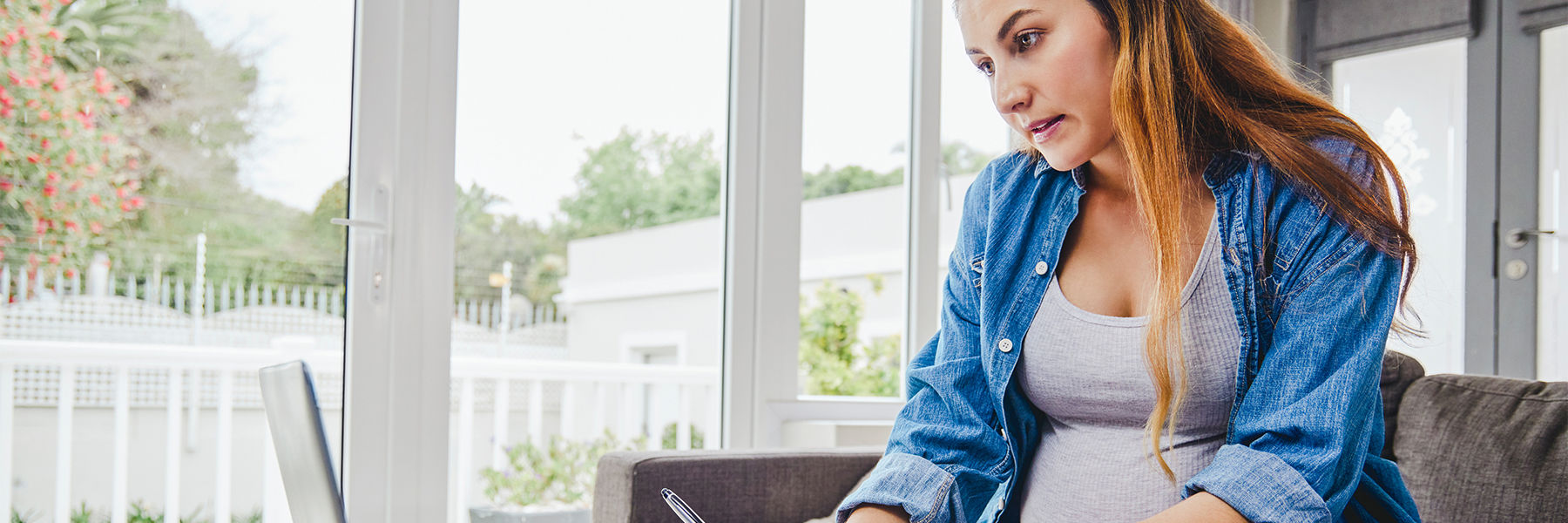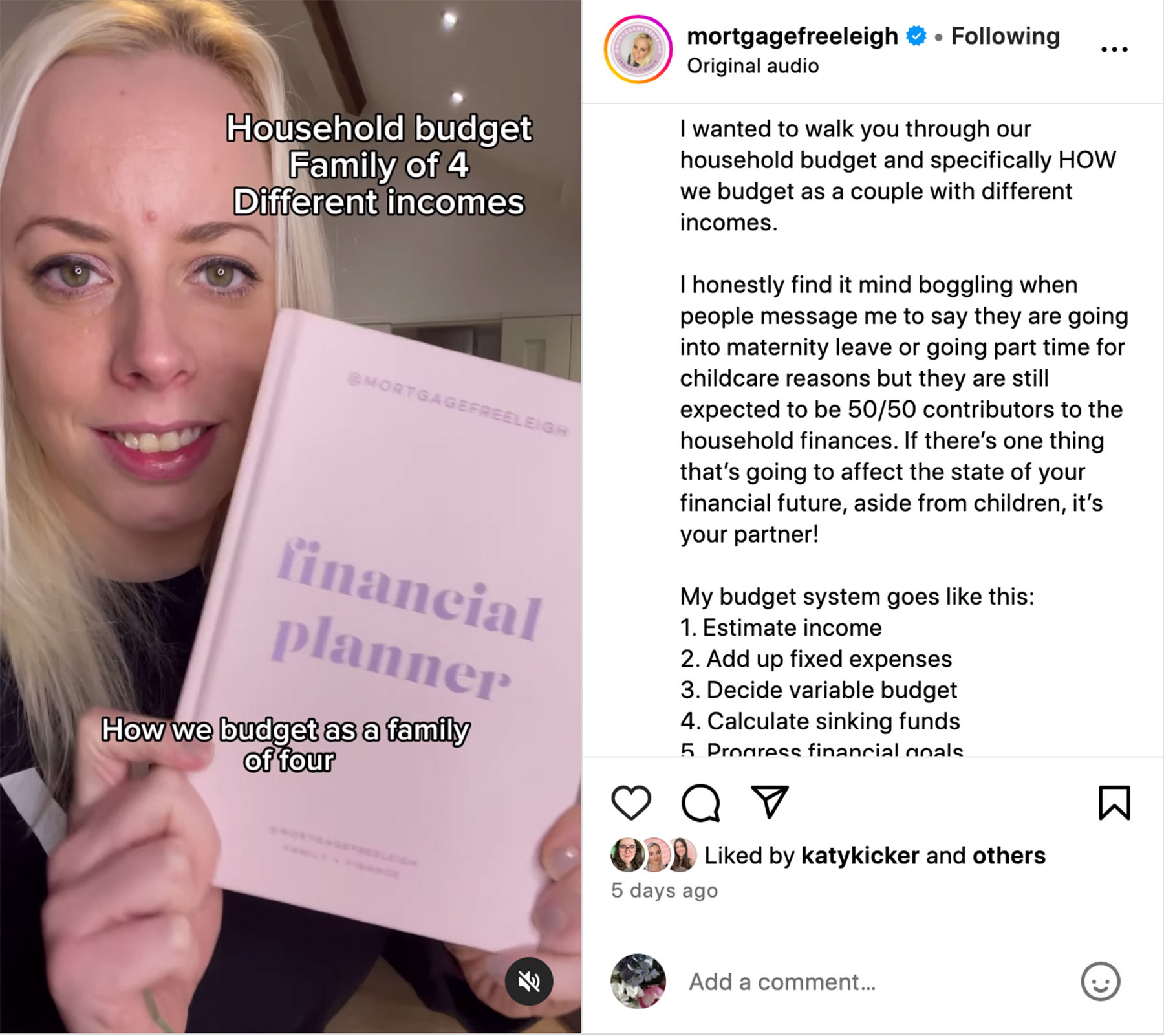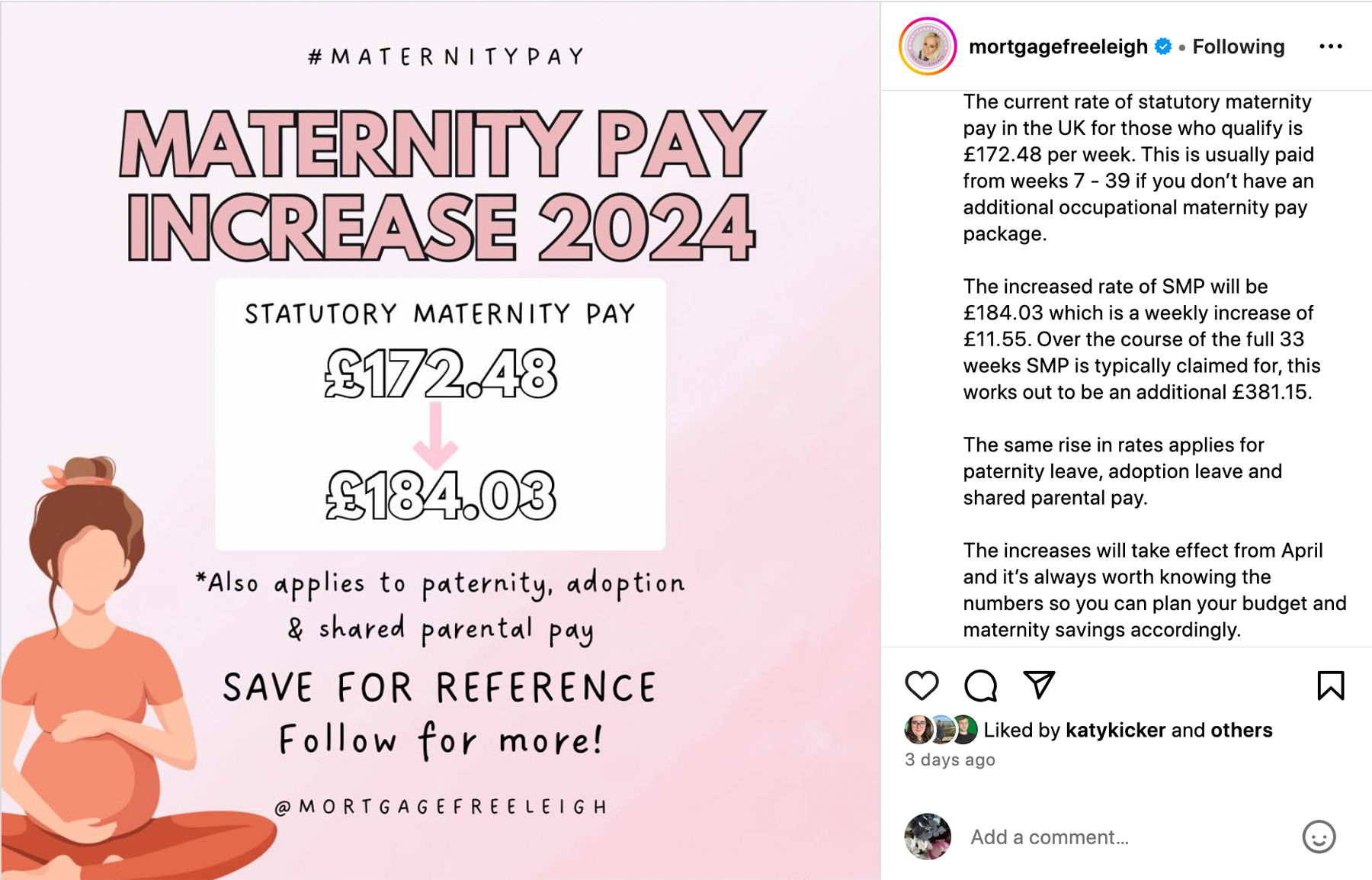Use arrow keys to navigate through the menu items. Use Tab key to navigate through the menu banners.
How I Save Money

How I Save Money
Financial influencer and mum of two Lianne Macfarlane shares her best hacks for pregnancy and beyond
Hi! I’m Leigh, and I’ve recently returned to work after having my second baby. During my first maternity leave I discovered my passion for budgeting and now I run @mortgagefreeleigh where I talk about money and mum life on Instagram, TikTok and more recently, YouTube. I started my social media pages because having kids is expensive but there’s so much you can do to improve your financial situation, and I wanted to share my experience! So, here are my tips to help you manage your finances from pregnancy to your return to work.
Funding your maternity leave
If you’ve just found out that you're pregnant, congratulations! After the initial excitement, it's important to start thinking about maternity leave and more importantly, maternity pay. Consider how much time you want to take off and how much money you need to save to cover your expenses during that period. Personally, I wanted to take a full year off with my babies. So, I calculated our household bills and living costs and worked out how much I needed to save to cover the gap between our expenses and our income during the reduced pay period. I even created a formula to help you calculate your own savings. You can find it on my Instagram page.
By doing this, I was able to save a pot of money to ‘pay’ myself a top-up every month. I know it can be very difficult to save in the current climate and this may not be an option for everyone but if you can do it, the benefits will be so worth it.

Leigh shares her money-saving advice on Instagram
Preparing for your new arrival
In today’s social media-driven world the internet will tell you that you NEED this brand of cot or that pricey nursery furniture set and let me be clear: you probably don’t need it! Making a distinction between “wants” and “needs” will help. There is no limit to the amount of money you could spend kitting out your new arrival, but your baby doesn’t know the difference between budget-friendly and designer!
I remember looking at a very pricey baby bouncer that the internet was raving about. Thankfully, I realised that my baby might not enjoy being in a bouncer that much, so I decided to direct the extra funds towards something else. We ended up buying a much more wallet-friendly bouncer from Asda, and it was 100% the right decision. We did something similar with our pram and decided against spending over £1,000 on a high-end travel system. Instead, we opted for a budget-friendly own-brand line which turned out to be a blessing in disguise. As it turns out, both of my children preferred being in a baby carrier, anyway!
Budgeting through maternity leave
Once you start receiving statutory maternity pay your budget will be your best friend. Starting maternity leave and going onto maternity pay was the catalyst for my journey into budgeting and now I wouldn’t be without it! There are many budgeting methods out there and I’d urge you to find the one that suits your personality best. I am a zero-based budgeter and that means I assign all my money a purpose from the day I am paid. At the end of the month, I should be left with nothing. I like to work out my budget in the following categories:
-
Fixed expenses: Monthly bills and expenses like subscriptions.
-
Variable expenses: The money you need to live on for groceries, petrol and the like.
-
Sinking funds: These are pots of money you save for irregular costs like Christmas or holidays.
-
Financial goals: Anything that’s left will go towards your goals whether it be maternity savings, paying off debt or saving for a house.
This approach has allowed me to fund two-year-long maternity leaves and overpay my mortgage by over £17,000 since 2020!

Cutting costs on maternity leave
You may need to reduce expenses during your maternity leave. I have learned many money-saving tips over the years, and it upsets me to see people miss out. Here are three of my favourites:
1. Use cashback apps: Numerous sites and apps offer cashback on everyday purchases such as groceries and household appliances. Some of my favourites include Top Cashback, Quidco and Jam Doughnut. If you’re not getting cashback, you’re likely spending more than you need to, it’s as simple as that!
2. Make the most of loyalty cards: I always use loyalty cards whenever I go out, as they offer great rewards when you collect enough points. The Asda Rewards app is a perfect example of this. During our Christmas shopping, we scanned the app and earned over £20 in rewards, and I even won £7.50 on the Christmas Spin to Win game. Many apps also offer a welcome bonus. When I was on maternity leave, free (decaf) coffee was high on my list of priorities, so I suggest signing up for all the local coffee shop loyalty programmes as well!
3. Try a brand downshift: I’ve taken part in several budget shopping challenges during my social media career. It’s amazing what bargains you can find when you shop own labels. Do you remember when the internet went crazy for Asda’s Just Essentials range? It was for a good reason! Here’s one of my favourite budget shopping challenges: movie night essentials for only £5 at Asda (these prices were correct at the time of filming).
Saving on childcare costs
If you are returning to work after maternity leave, you might find that childcare costs can be significant, especially if you don’t have any family support available. Before having kids, I wasn’t familiar with the terms “tax-free childcare” or “30 hours free” and I found it quite difficult to figure out the details on my own. Here’s a simple explanation of these schemes.
-
30 hours is a government scheme in England that offers 30 hours of funded childcare for 3 and 4-year-olds, subject to eligibility. The scheme has recently been expanded, and by September 2025, it is proposed to extend it to all eligible children from the age of 9 months. Find out more on the government website (which also links to childcare schemes for Scotland, Wales and Northern Ireland).
-
Tax-free childcare is a UK-wide government scheme that can help you pay for your child’s care. If you are eligible, for every 80p you pay in, the government will add 20p, up to a maximum of £2,000 per year per child. The scheme is for children 11 years old or younger, and it can be used for ‘approved childcare’ such as holiday clubs and wraparound care. Find out more here. Other schemes may be better for you though, so check here first.
Saving on children’s clothes
I have a final money-saving hack that I’d like to share with you: how to save money on clothes for your little ones. Since babies grow out of their little outfits so fast, I’ve picked up a few tricks that I use to keep clothing costs down.
Firstly, I get second-hand items from friends and charity shops. Secondly, I try to buy oversized clothing where possible, especially with jumpers and t-shirts which can be difficult to get little baby arms into anyway! Thirdly, I buy almost all my kids’ clothes from the supermarket because I find that the quality for the price is unbeatable. I particularly like affordable but cute lines such as George at Asda because you don’t want to send your child to nursery in a pricey outfit. Trust me, you’ll regret it!
Finally, my absolute favourite hack is the “next size up box” where I keep kids’ clothes that I have found on sale in a larger size. When it comes time to swap out their wardrobe, I can simply shop my own stash at half the price.
Where to find me
I hope this was helpful! You can find me on Instagram, TikTok and YouTube and at www.mortgagefreeleigh.com for more information on anything I’ve spoken about here, and do get down to your local Asda to try out my £5 movie night challenge!
Help & Customer service
- Help Centre
- How to shop
- Product recalls
Payment Methodslist with 8 items
- Asda Group of Companies
- Modern Slavery Statement
- Electrical Waste Recycling
- Terms & Conditions
- Customer Review Policy
- Privacy Centre
- Cookie Settings
- Accessibility
© ASDA 2025